 by our College Data Analytics Team
by our College Data Analytics TeamValencia College total enrollment is approximately 45,949 students.
Male/Female Breakdown of Undergraduates
The full-time Valencia College undergraduate population is made up of 59% women, and 41% men.

For the gender breakdown for all students, go here.
Valencia College Racial/Ethnic Breakdown of Undergraduates
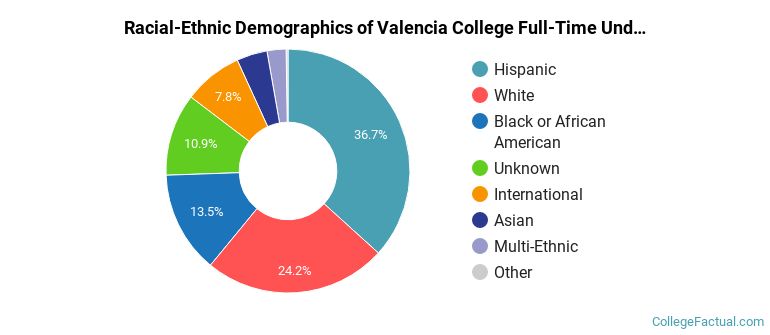
| Race/Ethnicity | Number |
|---|---|
| Hispanic | 6,397 |
| White | 4,232 |
| Black or African American | 2,450 |
| International | 1,107 |
| Unknown | 954 |
| Asian | 787 |
| Multi-Ethnic | 490 |
| Native Hawaiian or Pacific Islander | 37 |
See racial/ethnic breakdown for all students.
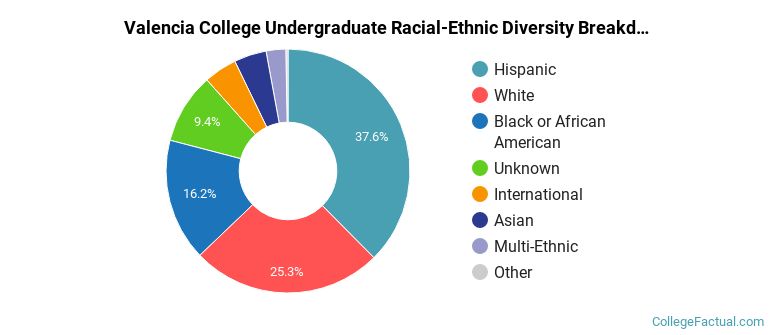
| Race/Ethnicity | Number |
|---|---|
| Hispanic | 17,920 |
| White | 11,893 |
| Black or African American | 7,660 |
| Unknown | 2,824 |
| Asian | 2,142 |
| International | 1,974 |
| Multi-Ethnic | 1,309 |
| Native Hawaiian or Pacific Islander | 122 |
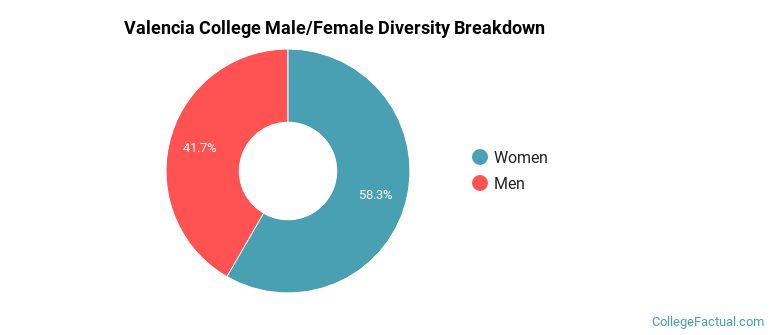
There are approximately 27,779 female students and 18,170 male students at Valencia College.
Valencia College ranks 1,834 out of 2,183 when it comes to geographic diversity.
0.37% of Valencia College students come from out of state, and 2.43% come from out of the country.
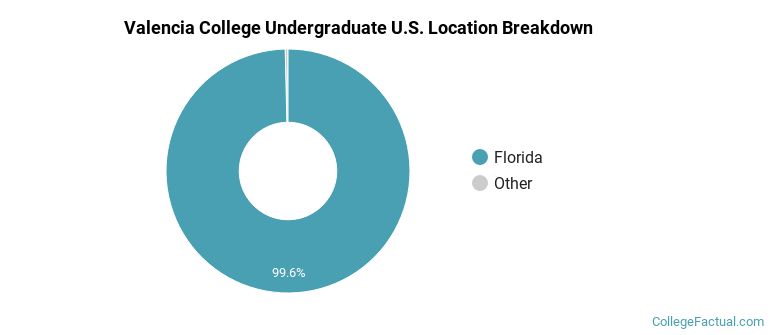
The undergraduate student body is split among 18 states (may include Washington D.C.). Click on the map for more detail.
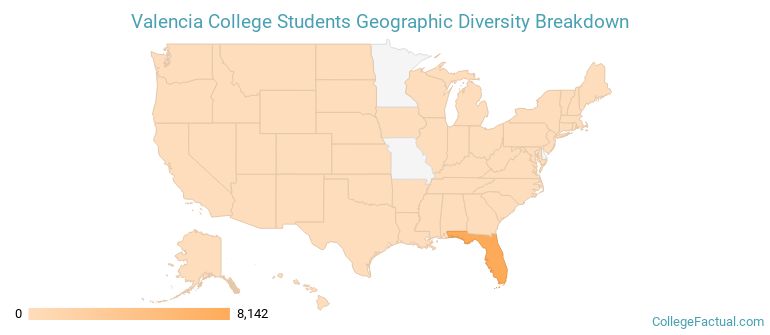
| State | Amount |
|---|---|
| Florida | 8,142 |
| New York | 4 |
| Georgia | 3 |
| Maryland | 3 |
| New Jersey | 3 |
Students from 119 countries are represented at this school, with the majority of the international students coming from Brazil, Venezuela, and China.
Learn more about international students at Valencia College.
A traditional college student is defined as being between the ages of 18-21. At Valencia College, 51.00% of students fall into that category, compared to the national average of 60%.
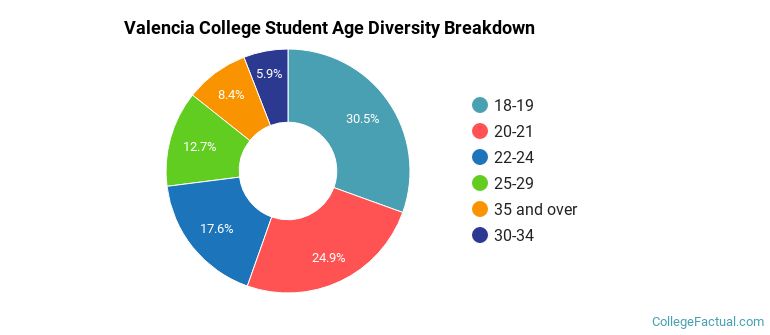
| Student Age Group | Amount |
|---|---|
| 18-19 | 12,597 |
| 20-21 | 10,270 |
| 22-24 | 7,260 |
| 25-29 | 5,241 |
| 35 and over | 3,476 |
| 30-34 | 2,430 |
| Under 18 | 0 |
Footnotes
*The racial-ethnic minorities count is calculated by taking the total number of students and subtracting white students, international students, and students whose race/ethnicity was unknown. This number is then divided by the total number of students at the school to obtain the racial-ethnic minorities percentage.
References